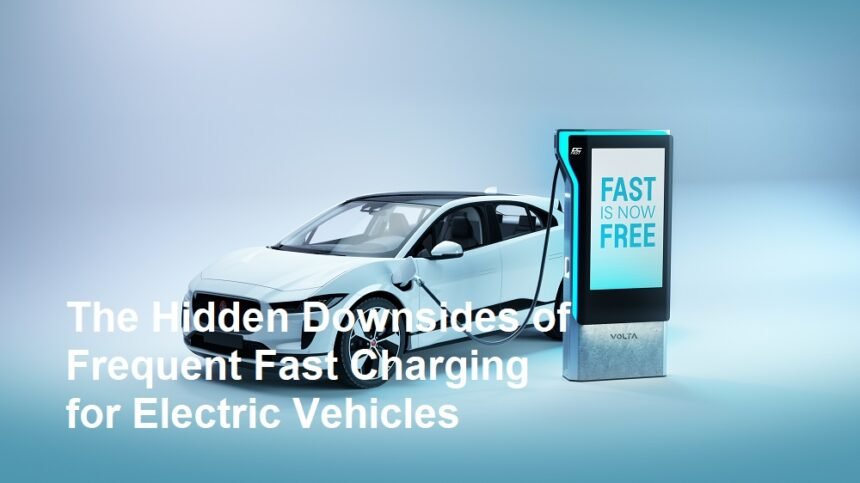Electric vehicles (EVs) are often hailed as the future of transportation, offering a cleaner, more sustainable alternative to traditional gasoline-powered cars. However, as EV adoption grows, so do concerns about the long-term effects of fast charging—a popular convenience that allows drivers to recharge their batteries in minutes rather than hours. While fast charging is undeniably practical, experts warn that overuse can lead to significant drawbacks, including reduced battery life, higher costs, and environmental concerns.
The Appeal of Fast Charging
Fast charging stations, capable of delivering up to 350 kilowatts of power, have become a cornerstone of EV infrastructure. For drivers, the ability to recharge an EV battery to 80% in 20-30 minutes is a game-changer, eliminating the “range anxiety” that has long deterred potential buyers. Companies like Tesla, Electrify America, and Ionity have invested heavily in expanding fast-charging networks, making EVs more viable for long-distance travel.
However, the convenience of fast charging comes at a cost. “Fast charging is like feeding your car junk food—it’s quick and satisfying, but not ideal for long-term health,” said Dr. Sarah Mitchell, a battery technology expert at Stanford University.
Battery Degradation: The Silent Killer
The most significant downside of frequent fast charging is accelerated battery degradation. EV batteries, typically lithium-ion, are designed to handle a certain number of charge cycles before their capacity diminishes. Fast charging generates excess heat, which stresses the battery cells and can lead to premature aging.
A 2020 study by the University of California, Riverside, found that batteries charged exclusively at fast stations lost up to 40% of their capacity after 1,000 cycles, compared to just 20% for those charged at slower, Level 2 stations. “Heat is the enemy of lithium-ion batteries,” explained Dr. Mitchell. “Fast charging pushes the battery to its limits, causing chemical reactions that degrade its performance over time.”
For EV owners, this translates to shorter driving ranges and potentially expensive battery replacements. A new EV battery can cost between 5,000and5,000and15,000, depending on the model, making degradation a costly issue.
Financial and Environmental Trade-Offs
Frequent fast charging also impacts the total cost of EV ownership. While fast charging is convenient, it is often more expensive than home charging. Public fast chargers can cost two to three times more per kilowatt-hour than residential electricity rates, adding up over time.
Moreover, the environmental benefits of EVs can be undermined by the energy sources powering fast-charging stations. In regions where electricity is generated from coal or natural gas, the carbon footprint of fast charging increases. A 2021 report by the International Council on Clean Transportation found that EVs charged exclusively at fast stations in coal-dependent areas could emit up to 50% more greenhouse gases over their lifetime than those charged at home using renewable energy.
Balancing Convenience and Care
To mitigate these issues, experts recommend a balanced approach to charging. “Think of fast charging as an occasional tool, not a daily habit,” advised John Voelcker, an automotive journalist specializing in EVs. “For everyday use, slower charging at home or work is far better for your battery’s health.”
Many EV manufacturers, including Tesla and Nissan, have implemented software safeguards to protect batteries during fast charging. These include cooling systems to manage heat and algorithms that slow charging speeds as the battery fills. However, these measures are not foolproof, and drivers must still exercise caution.
The Road Ahead
As EV technology evolves, researchers are exploring solutions to the fast-charging dilemma. Solid-state batteries, which promise faster charging and longer lifespans, are one potential breakthrough. Companies like Toyota and QuantumScape are investing heavily in this technology, though widespread adoption remains years away.
In the meantime, policymakers and industry leaders must address the challenges of fast charging. Expanding access to affordable, renewable energy-powered charging stations and educating consumers about best practices are critical steps.
Conclusion
While fast charging has made EVs more accessible and convenient, its drawbacks cannot be ignored. From battery degradation to environmental concerns, the hidden costs of frequent fast charging highlight the need for a more sustainable approach to EV infrastructure. As the world transitions to electric mobility, striking a balance between convenience and care will be key to ensuring the long-term success of this transformative technology.













